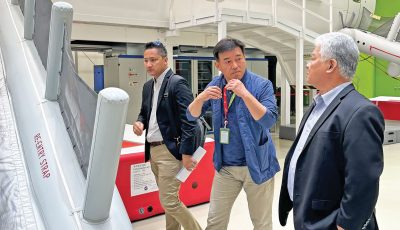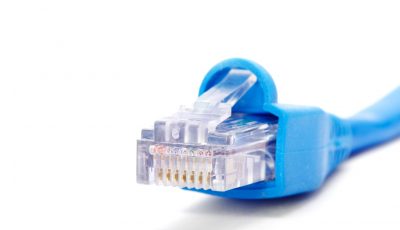Man in possession of ATM skimming devices arrested

FBI photos compare skimming devices seized from Xiaolin Yang with that of Bank of Guam in Garapan that allegedly confirmed the illegal card readers were an exact match with the factory installed card readers present on the bank’s ATM machines. (Contributed Photo)
Federal Bureau of Investigation special agents arrested on Friday a Chinese man who was allegedly found concealing in his luggage ATM skimming devices.
Xiaolin Yang was served with an arrest warrant issued by U.S. District Court for the NMI Magistrate Judge Heather L. Kennedy on Friday after the U.S. government filed a complaint charging him with illegal possession of device-making equipment.
At an initial court appearance on Friday afternoon, Kennedy granted assistant U.S. attorney Garth Backe’s motion for a detention hearing.
Kennedy set the detention hearing for May 4 at 9am and the preliminary hearing for May 15.
Attorney Mark B. Hanson was appointed as counsel for Yang.
According to FBI special agent Haejun Park in his affidavit, Yang arrived on Saipan onboard Asiana Airlines Flight No. 625 from Hong Kong via Incheon, Korea on Thursday early morning.
Park said during immigration processing by U.S. Customs and Border Protection, Yang acted suspiciously so he was required to undergo additional screening.
Park said during this additional screening, ATM skimming devices were found inside his luggage.
Park said ATM skimming device is a device typically fastened over the top of the factory installed card reader.
Together with a small hidden camera, this device is used by criminals to capture the data from the magnetic stripe on the back of an ATM card (“access device”) as well as the customer’s inputted personal identification number (PIN).
The captured data is later transferred onto a fraudulent ATM card and the captured PIN is used to withdraw money from the account.
Park said Yang acknowledged that he received the devices in China from his friend, who instructed him to just bring them to Saipan and that the friend would follow him.
Park said recognizing the appearance of the seized green-colored card readers, he went to Bank of Guam in Garapan and confirmed the illegal card readers were an exact match with the factory-installed card readers present on the bank’s ATM machines.
While being detained and after all other passengers had departed the airport, CBP officers noticed an Asian male waiting in the passenger arrival area outside the terminal.
CBP officers approached the man who stated he was waiting for a passenger. The man, who produced a CNMI driver’s license, refused to provide the passenger’s name.
About 20 minutes later, CBP officers noticed the same man once again in the passenger arrival area. When CBP officers approached him, he immediately left the area.
Park said during his interview, Yang disclosed that his friend in China made reservations for him at the Holiday Hotel.
Park said in his consent search of Yang’s belongings he found an iPhone 6, in which in the phone’s chat history, messages between Yang and his friend in China were discovered.
Park said the messages include the friend giving detailed instructions about traveling to Saipan and what to do upon arrival.
Park inspected the devices and determined that they consisted of two green-colored card readers and six grey-colored plastic panels with pinhole cameras secreted inside.
Park said Bank of Guam vice president and CNMI regional manager Marcie Tomokane confirmed that BOG was not expecting any service to be performed on any of its ATM machines on Saipan and added that such device was performed by technicians from the U.S. mainland.
Park leads the FBI’s investigation into the skimming devices that were discovered earlier last April on two ATM machines at First Hawaiian Bank in Oleai.
Last April 9, the FBI released 10 photos of individuals wanted by the FBI for questioning in connection to the recent electronic thefts from First Hawaiian Bank accounts held by Saipan residents.
FHB stated that card skimming through their ATMs was believed to be the cause of the unauthorized transactions made in various FHB accounts.



























